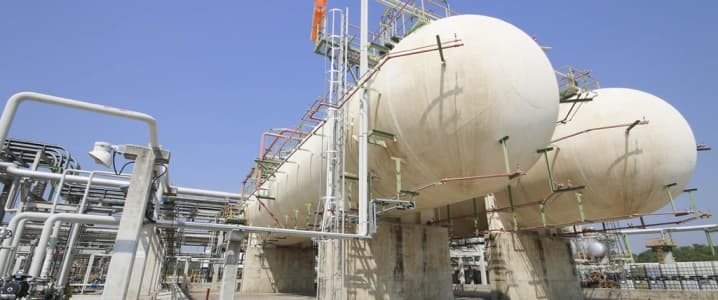Investors generally fear volatility. They are taught to do so by financial advisors who use the word as a pseudonym for market declines and the associated losses, and who see it as a measure of risk. They will even often show you a scatter chart with volatility on one axis and returns on the other, as if the two things are mutually exclusive, and tell you that you want to be in the upper left corner, where returns are high and risk is low. Traders, on the other hand, understand that that is BS.
First off, return on an investment is a reward for risk, so expecting to maximize returns while minimizing risk is, to say the least, naïve. Secondly, equating risk with volatility makes no sense, particularly to someone with a trading mindset. Yes, volatility involves downward movement, but it also involves sharp moves up. A big drop is not volatility, it is a big drop, and moreover one that you can easily profit from by being short. The real risk to traders is a lack of volatility…no movement, no money!
That is why, from a trading perspective, volatility is your friend. Without it, moves are ill-defined and always subject to random events or news. With it, you can get in and out quickly, decreasing the chances of some political statement or world event creating a big move in the opposite direction to that suggested by all your hard work and analysis. You should welcome it, but that doesn’t mean that you shouldn’t respect it.
Many people believe that volatile markets…
Investors generally fear volatility. They are taught to do so by financial advisors who use the word as a pseudonym for market declines and the associated losses, and who see it as a measure of risk. They will even often show you a scatter chart with volatility on one axis and returns on the other, as if the two things are mutually exclusive, and tell you that you want to be in the upper left corner, where returns are high and risk is low. Traders, on the other hand, understand that that is BS.
First off, return on an investment is a reward for risk, so expecting to maximize returns while minimizing risk is, to say the least, naïve. Secondly, equating risk with volatility makes no sense, particularly to someone with a trading mindset. Yes, volatility involves downward movement, but it also involves sharp moves up. A big drop is not volatility, it is a big drop, and moreover one that you can easily profit from by being short. The real risk to traders is a lack of volatility…no movement, no money!
That is why, from a trading perspective, volatility is your friend. Without it, moves are ill-defined and always subject to random events or news. With it, you can get in and out quickly, decreasing the chances of some political statement or world event creating a big move in the opposite direction to that suggested by all your hard work and analysis. You should welcome it, but that doesn’t mean that you shouldn’t respect it.
Many people believe that volatile markets mitigate against risk control, but there is no reason that should be true. Stop losses should still be used, and if the volatility is so extreme that you feel the need to place those stops further away than you might otherwise, that indicates that you should reduce your trade size accordingly, not give up on the trade. Some will say that stop loss orders should be avoided in a volatile market because they may not be executed exactly at your level, but with the amount of liquidity available during market hours in stock and commodity markets today it will nearly always be very close, and once again, a reduction in position size can keep things under control.
Energy markets are particularly prone to volatility, and natural gas futures (NG) have shown that recently.

(Click to enlarge)
In around a month starting from the low on December 21st, natural gas climbed over forty percent, then turned and gave up well over half of those gains in about a week. To an investor trained to equate volatility with risk, that is a scary looking chart, but if you look with a trader’s eye you can see that despite the volatility, natural gas futures have, at both ends of the spectrum, offered a relatively low risk, high reward trade.
What the chart shows is that both the bottom and top of those moves were marked by multiple touches of, or at least attempts at, a level. That means that the reversal was clearly signaled in each case. If you picked up on that signal in December you could initiate a trade, at say 2.70 on the way up, with a stop just below the 2.60 support, limiting your potential loss to a manageable amount. Similarly, after the resistance just above 3.60 held multiple times, you could have sold just below there with a stop just above.
You may say that it is easy to trade with hindsight, and that is true, but the purpose here is to show that volatility and risk are not the same thing. The natural gas futures market has been volatile, but by trading off established levels of support and resistance with logical stops it was quite possible to play it with controlled, limited risk. At some point before too long, natural gas will probably turn again. If it does so after forming a multiple bottom, and especially if that bottom is around the already established 2.60 mark, it will set up for another risk controlled trade that embraces volatility, and when that time comes, you should be ready.















